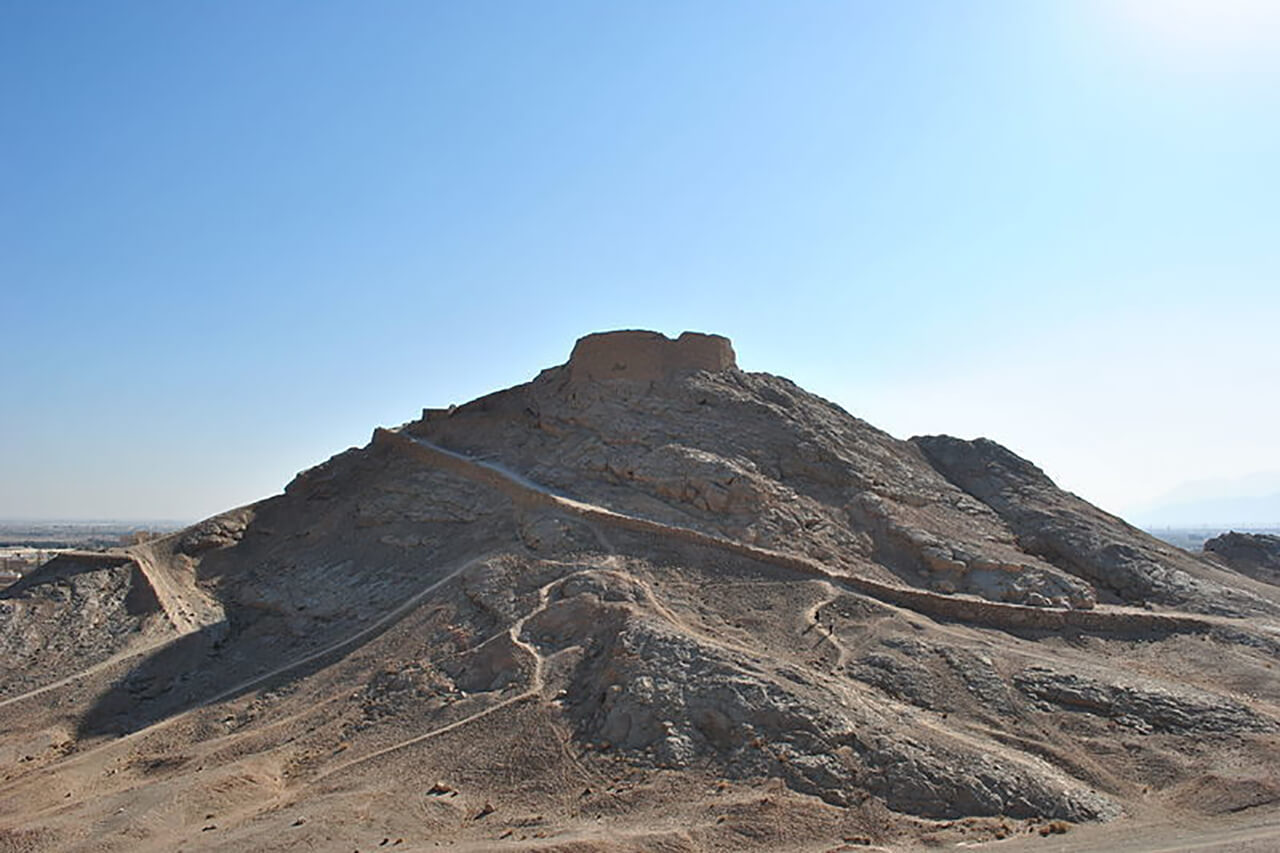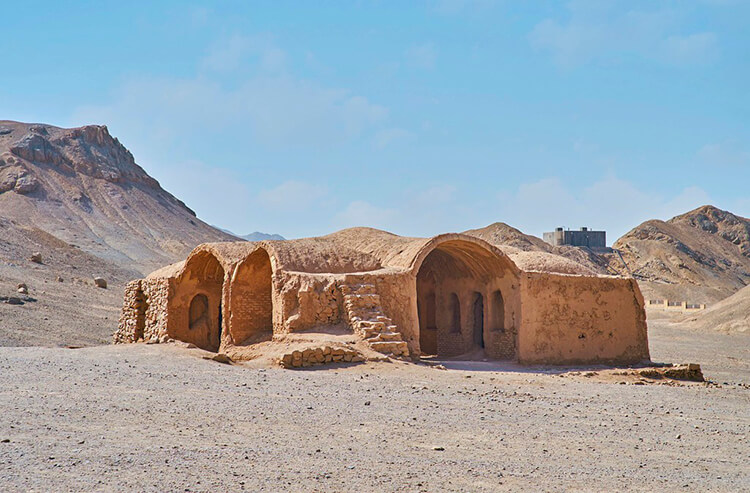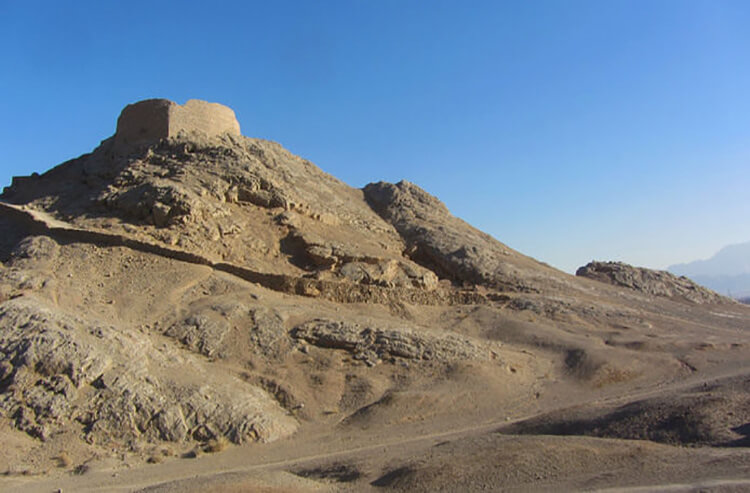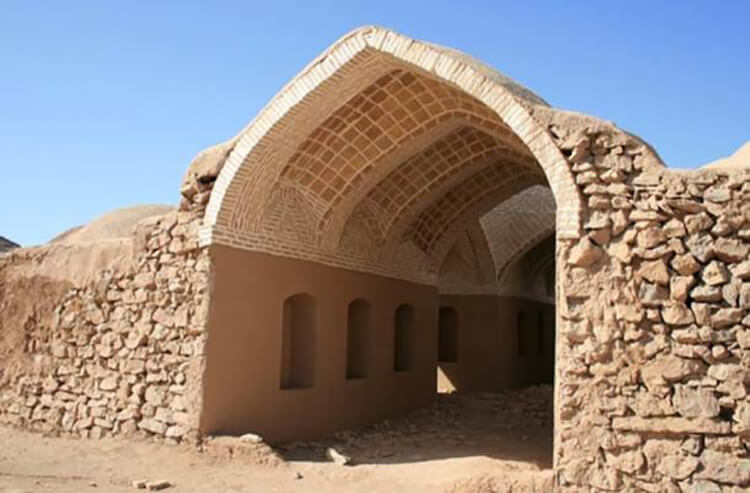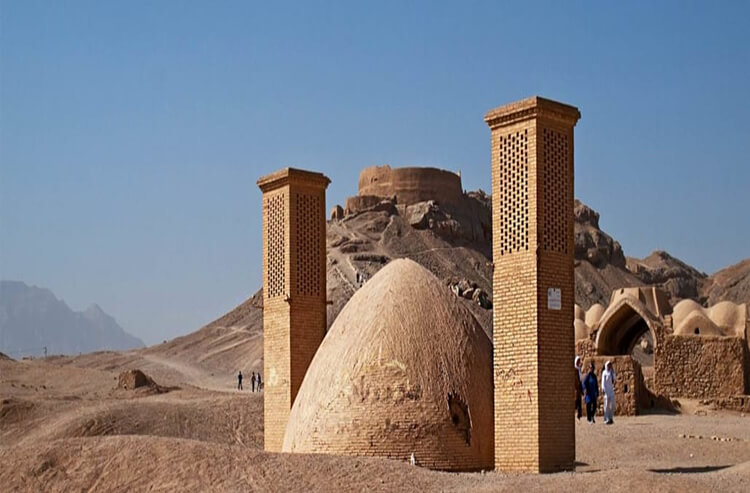Zoroastrian Towers of Silence
A tower of silence (known also as a ‘dakhma’) is a type of structure used for funerary purposes by adherents of the Zoroastrian faith. This Zoroastrian practice for the disposal of the dead involves the exposure of the corpse to the sun and vultures. This practice has been used traditionally by Zoroastrians, though it has become less common in recent times. As a result, there are a number of disused towers of silence, which no doubt have an air of mystery around them.
According to Zoroastrian belief, the four elements – fire, water, earth and air, are sacred, and ought not to be polluted by the disposal of the dead. Cremation, for example, is believed to cause pollution to fire, air, and at times river water as well, whilst burial (without adequate lining of the grave) causes pollution to the earth and ground water.
In order to avoid polluting these elements, Zoroastrians resorted to other means of disposing their dead. The most notable of these is the exposure of the dead to scavenging animals, which is the idea behind the construction of the towers of silence.
These towers were essentially raised platforms with three concentric circles within them. The bodies of men were arranged on the outer circle, those of women in the middle circle, and those of children in the inner circle. The dead were left on the tower of silence, where their flesh would be eaten by vultures. Provided that the vultures are present in adequate numbers, the flesh may be completely stripped from the bones in less than half an hour.
After the body was stripped of its flesh, the remaining bones would be left to be dried and bleached by the sun. The stripping of the flesh and the drying of the bones are regarded as a purification process, after which the skeletal remains may be collected and deposited in an ossuary, which may be located within or nearby the tower. Alternatively, the bones may be placed in a central well, where, if the climate is dry, they would naturally disintegrate into powder.
However, after ۱۹۷۰s, this tradition became illegal in Iran and the government made the Zoroastrian community to adjust to other methods as the funeral process. As a result, many of them have applied burying the corpse beneath concrete as a way to avoid all contaminants.
